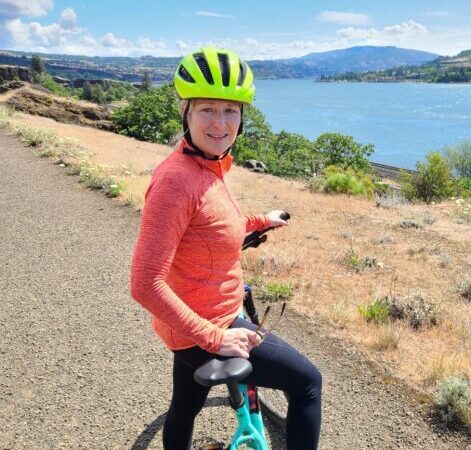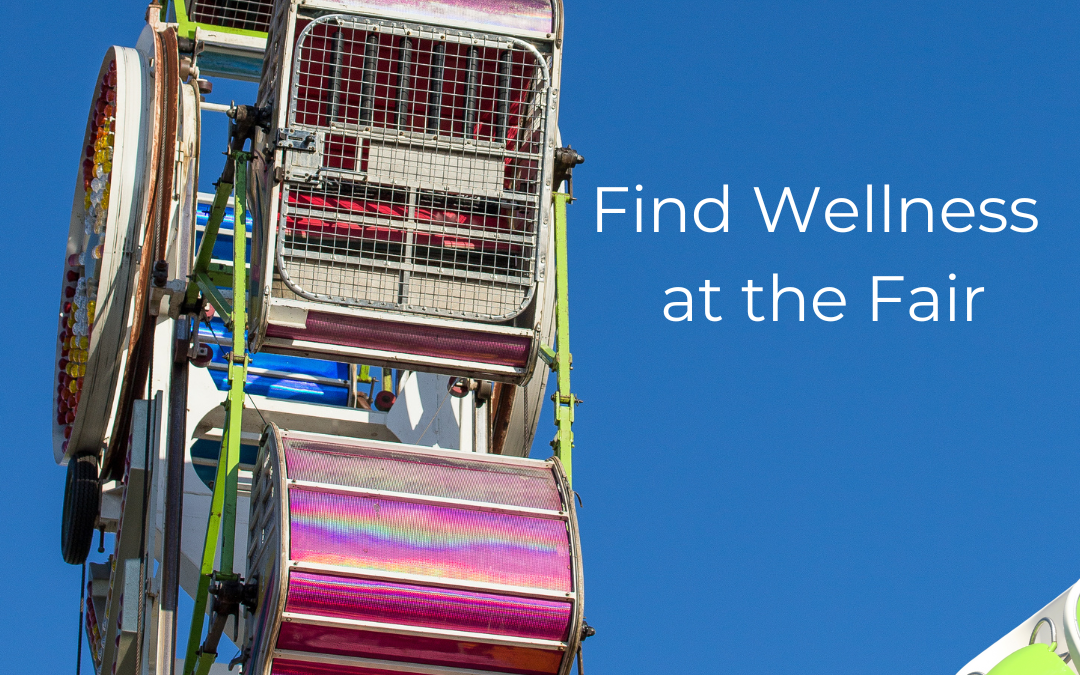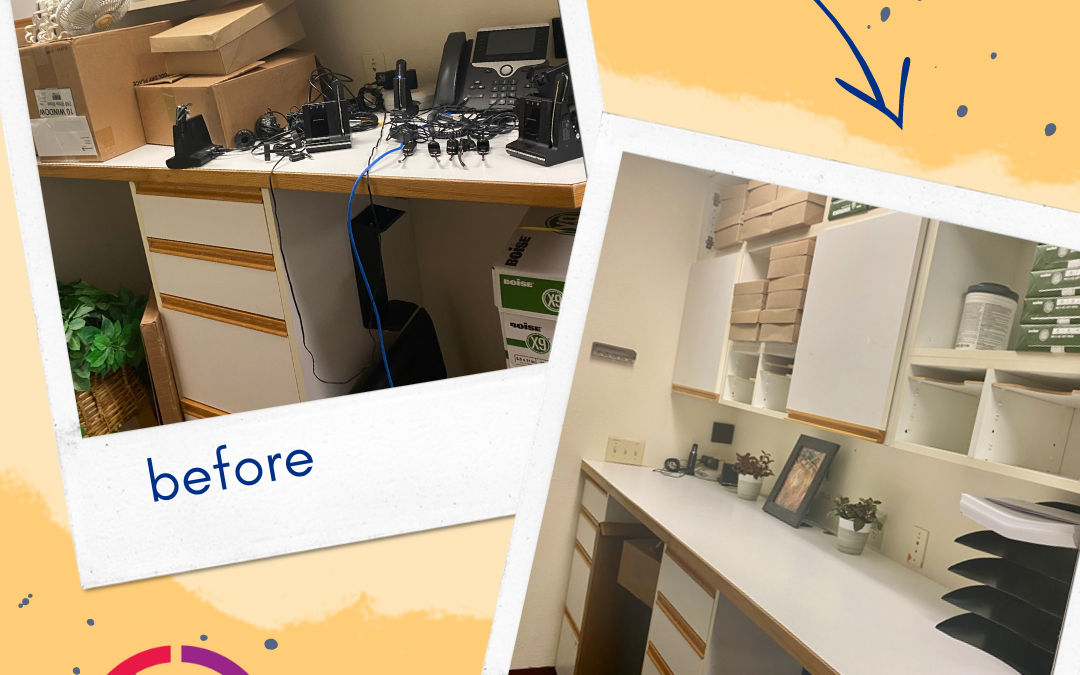
by Michelle | Jan 31, 2025 | Being Well, Eat Well, Featured, Uncategorized
Did you know simple mealtime routines can set children up for success? Providing nutritious foods that nourish a child’s physical and mental development is important; however, predictable mealtime patterns can be equally, if not more, important. Safe, consistent and nurturing care are critical for the development of a young child’s nervous system. These factors contribute to a child’s ability to make sense of the world and the degree to which they feel a sense of agency or control over their place in the world. Early childhood experiences shape how their bodies and minds will react to adversity in the future. Parents and caregivers can use mealtimes to reinforce safety and shared expectations with children as a way to build resilience.
The book, Hungry for Love, by Registered Dietician Charlie Slaughter describes how establishing set mealtimes with consistent, shared expectations between caregiver and child strengthens bonds of trust and feelings of safety. Even if parents have not had this modeled for them in their own lives, they can adopt these simple practices within their own family environment. The earlier children are exposed to established routines, the better. If children are older, it can be more challenging to shift family norms. As with any effort to change habits, it’s best to make small changes over time and to be patient with progress.
Following are some research-backed strategies to consider:
Eat Together: Establish and maintain consistent mealtimes in a designated location. Ideally this is the dining or meal preparation area, to be associated with eating together as a family as often as possible. Even if it is only a few nights a week, setting this pattern creates expectations that spending time being nourished together is a priority. Let’s face it. We need to eat to survive. And we need each other to survive. There aren’t many better ways to instill a sense of safety and security in children than to prioritize eating meals together in a calm and supportive setting. Our family rule was that food could only be eaten in the “hard floors” part of the house. Since we had carpet in the living room, this meant meals and snacks had to be consumed in the kitchen or dining area. Yes, it kept my house a lot cleaner but the main idea was to focus on food and family. This also helped limit snacking so the kids were hungry for mealtimes.
Foster Connection: Families are busy. It’s okay to have boxed macaroni and cheese with fish sticks or even take and bake pizza for dinner sometimes. What’s important is to establish spending time together as the priority. Eating around the television or using cell phones during meals signals the importance of sources other than the child and they will get that message loud and clear. Instead, use meal times as a safe, welcoming environment to discuss everyday events, feelings and challenges. Our family used “high,low, middle” as a mealtime conversation starter. “Tell us your high and your low from today and something interesting that happened.” Asking kids open-ended questions helps parents learn more about their child’s perspective and it helps the child develop crucial skills of self-awareness and empathy.
Set Clear but Compassionate Expectations – and stick to them: Introduce choices to build a sense of agency or control while also setting clear expectations. “Would you like green beans or broccoli?” The message here is that we are going to eat healthy vegetables but you can choose which one. Families can fall into patterns where mealtimes become a power play. “You WILL eat your vegetables!” This is a great way to train a child to avoid vegetables for the rest of their life. It can take multiple introductions of certain foods before kids form a positive association. Find ways to empower children to try new things. We had a rule that each child had to eat at least as many bites of their vegetables as they were old. If you were three, you ate three green beans. It was a crazy idea that actually worked really well for us in getting our kids to try new foods.
Many people grow up as members of the “clean plate” club; where the expectation is that every morsel of food on the plate has to be consumed. This can set children up for disordered eating patterns later on. Consider using divided plates to help children learn portion control and let them dish up servings for themselves when they are old enough. This helps develop mindful eating patterns where portion sizes are driven by hunger and satiety cues rather than mere habit. Welcoming, safe mealtimes also support kids eating more slowly which will help them recognize those cues.
Last but not least, set consistent expectations around dessert. Rather than establishing a pattern that every meal ends in dessert, consider having fruit or no dessert after dinner most nights of the week and designate one or two nights a week for special treats. According to the American Heart Association, it is estimated that Americans consume 2 to 3 times the recommended daily allowance of sugar. That adds up to about 60 pounds – the equivalent of six, 10-pound bowling balls – every year. Setting family norms around sugar consumption is critical for lifelong health. Our family eliminated candy early on as a way to reduce artificial ingredients in our kids’ diets. We allowed chocolates as small treats and designated Friday as “ice cream night.” To make it even more special, it was the one exception to eating in the living room.
Mealtimes are more than just opportunities to nourish our bodies—they are powerful moments to nurture our children’s emotional and psychological well-being. By establishing predictable routines, fostering connection, and setting compassionate yet clear expectations, we can create a safe and supportive environment that helps children feel secure, understood, and empowered. These simple yet impactful strategies not only contribute to healthier eating habits but also build resilience, emotional regulation, and a sense of belonging.
AUTHOR: Michelle Jenck, Adventist Health Tillamook Director of Community Well-Being

by Michelle | Jan 9, 2025 | Featured, Uncategorized
Many of us view the new year as a new beginning. Full of hope and optimism, we might be thinking of goals or changes we would like to achieve. Common themes are weight loss, better sleep habits, eating healthier, and being more active. Over many years as a fitness instructor, I have watched my classes swell in number in January, only to see my numbers return to normal by March. I, myself, am guilty of setting ambitious goals and not always sticking with them. What is it about change that is so hard for us? And what is the secret sauce for people who succeed at making changes?
As you can imagine, the answers to those questions are complex. One thing is tried and true and backed by research. We have to be ready for change. What does readiness look like? There is a model, called the Transtheoretical Model (TTM), that describes the various levels of readiness for behavior change. It can be helpful to understand this model and what each stage looks like. We can then use the model to identify which stage we are at for any given behavior we hope to change. Once we are aware of our level of readiness, we can begin to identify what motivates us to progress to the next level.
Model of Behavior Change
There are six stages to the TTM. Mind you, there were only five stages when I first learned this but I love the one that has been added. You’ll see why.
1. Precontemplation: No acknowledgment of a problem and no consideration of change
2. Contemplation: Acknowledgment of a problem and serious consideration of change in the future
3. Preparation: Initiation of some behavioral change
4. Action: Substantive behavioral efforts lead to alteration of the previous pattern
5. Maintenance: Change is sustained through continued effort
6. Termination: There is no desire to return to prior negative behaviors
To illustrate this model, I will use an example from my own experience. I used to be a night owl, going to bed at 11 o’clock and dragging myself out of bed in the morning at six or seven, depending on my obligations. Often, I was getting 8 hours of sleep, so I really didn’t consider this to be a problem. For a long time, I was in the Precontemplation stage regarding my sleep habits. They were out of sight and out of mind.
At some point, I realized that, too often, I was not getting enough sleep, which left me feeling run down and susceptible to getting sick. I noticed that I was snacking late at night which led to weight gain. I also realized I was wasting a lot of time watching TV in the evening. I began to wonder if my priorities were out of alignment and how changing my sleep habits might play a role in that. This is the Contemplation stage of behavior change, a time of dawning awareness that things are perhaps not as they should be.
The issues I was becoming aware of, motivated me to want to change my sleep patterns. Any Preparation stage for changing sleep habits will likely involve your alarm clock. Gradually, I began to work my way toward a 10:00 PM bedtime and a consistent 6:00 AM wake time. I was not always successful but was on the front end of developing new habits, using my alarm clock as my guide.
Before long, my sleep routine became consistent, keeping the same bedtime and wake time during both weekdays and weekends. I enjoyed having extra time in the morning for exercise, reading and prayer and began shifting my bedtime even earlier, to my current 9:00 PM “hard stop” and my 5:00 AM (sometimes earlier) wake time. This process took me from Action stage to Maintenance stage which I enjoy today.
Yes, I enjoy my sleep routine. It allows me to start my day off on the right foot. Watching less TV at night means fewer wasted hours of my day – and fewer calories too! I have more mental and physical energy and I am rarely sick. This is how we come to the Termination stage, where we no longer desire the former behavior because it no longer serves us. We come to prefer our new behaviors because we feel better than before, gaining a greater sense of control, or agency, over our lives.
Spend some time thinking about your own desires for behavior change. Start with something you believe you can change and then work your way through the stages of this model. I should add that this process can take a long time – sometimes a lifetime! It took me twenty years to transition my sleep patterns and the timeline was determined by my levels of awareness, readiness and motivation along the way. What are you ready to change?
AUTHOR: Michelle Jenck, Adventist Health Tillamook Director of Community Well-Being

by Michelle | Nov 1, 2024 | Being Well, Featured, Move Well, Why I'm In
Why I’m “in” with Wellness
Michelle Jenck, Well-Being Director, Adventist Health Tillamook and Tillamook County Wellness Coordinator
Wishing for Wellness
I was recently asked how I came to be involved in wellness work. I’d like to say I was a lifelong fitness enthusiast but that isn’t true. As a child, I wanted to be physically fit and athletic but, alas, it was not in the cards for me. Severe asthma left me breathing into a brown paper bag on the sidelines and a debilitating eye condition called amblyopia, (my left eye is nearly blind), meant that, with no depth perception, I was to forever be, the “last one picked for the team.”
During middle school, I was too young to work, old enough to be home by myself but idle enough to have begun getting in trouble (serious, trouble). My saving grace was wandering into a YMCA to kill time after school. I started going to the weight room and pushing weights around. I had no idea what I was doing but kind people showed me what to do and what muscles I was working. It felt so good to feel a sense of control moving my body. I could push heavy things on purpose and muscles would form in places that were once squishy bits. It was like magic.
The best part was how weight training made me feel emotionally. I felt happier and gained a sense of control (something I have learned we need for good mental health, called a “locus of control.”) My self-esteem improved. I could set goals for myself and work to reach them, building successes I never believed possible for myself. I pursued weight training all through high school and was one of a few girls that joined the school’s newly formed competitive power lifting team.
My senior year in high school, I decided maybe I could push my body in other ways and began my first attempts at running. Initially, I “ran” 1-2 blocks and then sat on a curb breathing into a paper bag until my asthma attack subsided enough to slowly walk home. Tenacious and undaunted, I kept after my goal, gradually working my way up to running 2-3 miles at a time, and ultimately up to 6 miles over as many years. Running, even at a slow pace, helped me burn off stress and was a convenient way to get in a quick bout of exercise when I didn’t have time to hit the gym.
Working in Wellness
Through high school, college and into my young adult life, exercise was a staple. I tell people it should be like brushing your teeth; something you do every day without even thinking about it, because it is so ingrained in your routine.
As a stay-at-home mom, I was taking classes at the Tillamook YMCA, grateful to spend time among adults. One day, I made the fateful decision to ask Jeannie Christensen if there was ever going to be a step aerobics class offered at the Y. Like so many things in a small town, the answer was, “why don’t you start one?” Thus began a nearly 30-year career of teaching many different exercise disciplines.
I loved (and still love) teaching fitness classes. It is a way to give back, helping others experience their best life. Over all these years I have seen fitness change people from the inside out. That “locus of control,” it turns out, is an important component of life success and resilience. When we become aware of and gain control over moving our bodies, using our minds, it is very empowering.
The A-Ha Moment
By this time, our oldest son had been diagnosed with autism and our lives were changing dramatically. As we worked with our son to help him develop the ability to regulate his emotions and manage the sensory stimuli causing so much turmoil in his mind and body, I discovered magic could be found in movement. The most effective exercises involved movements that strengthened the parts of his brain involved in balance, spatial awareness and motor planning. How interesting, I thought. The same could be said for teaching a step class.
Teaching adults how to move, while helping our son re-wire his brain with movement, turned out to generate an “a-ha” moment of monumental proportions. As I began to understand how the brain is formed and how it changes with regular physical activity, I began to consider the larger implications of what I was learning. What could this mean for other children? For anyone who wanted to be more physically coordinated, better regulated, smarter and more successful?
Armed with this discovery, I decided to go back to school to pursue a Master of Education in Health & Kinesiology. Graduating in 2012, I used my degree to expand exercise programming at the YMCA, adding Tai Chi: Moving for Better Balance, which over 300 older adults took in 2014. The following year, I was tapped to help lead a community effort to focus on reducing chronic disease in Tillamook County, which led to the formation of Tillamook County Wellness.
My Hopes for Wellness
I am very grateful for my experiences and the opportunity to influence health at both the individual and population level. As I enter my ninth year as coordinator for Tillamook County Wellness, I am looking ahead; or better yet, I am looking further “upstream.” So much of what contributes to wellness can be found between our ears. The mind. The brain. The connection between the brain and the body. This is where wellness starts. And it starts early in life – in the womb, in fact. Nearly 90% of a child’s brain is developed by the age of three and much of that development depends on movement.
My hopes for wellness are that we will begin to prioritize proper movement, nutrition and secure relationships during this critical window of childhood development. Do I have ideas for this? You bet I do and I can’t wait to keep working on wellness!

by Michelle | Aug 10, 2024 | Being Well, Featured, Move Well, Uncategorized
August is a busy month! There are several free wellness activities coming up, some of which you can learn more about at the Tillamook County Fair.
“Treasure Your Wellness” Treasure Map: This interactive map can be found at the Tillamook Library bookmobile located near the Master Gardener’s garden by the east entrance of the fairgrounds. This fun, free, and family-friendly adventure runs From August 5th to September 30th . Explore wellness destinations like Activity Island, Be Well-Nourished Bay, Community Cove and the Isle of Inner Peace. Each location includes activity challenges —volunteer, cook a healthy meal, visit a rec center, start a savings account and more. Complete at least one activity on each island and you could win incredible wellness-themed prizes, like cornhole, pickleball, and disc golf sets or the grand prize of an ATX bike valued over $500! In addition to being available at the fair, maps can be found at local library branches, Kiawanda Community Center, Tillamook YMCA, North County Recreation District and Food Roots or on- line at This Way to Well-Being | Tillamook County Wellness.
Health Literacy Campaign: Materials from our recent health literacy campaign can also be found at the Tillamook Library booth at the fair. Bookmarks and other materials highlighting important health information like finding a primary care provider, getting vital health screenings and knowing when to visit your doctor, urgent care or emergency department, are just a few topics covered. You can also find more information here. Community Health Survey: When you visit the Library Bookmobile at the Fair, be sure to take our Community Health Needs Survey. Tell us what you and your family most need to live your best life and your areas of greatest concern impacting your health and well-being. You can also take the survey here.
Financial Wellness: Visit the Habitat for Humanity booth – located in the main pavilion building, under the stairs near the fair office – for community conversations on what financial health means to you. While you are there, learn more about first-time home buying and other ways you can work toward your financial goals. While you are at the Habitat for Humanity booth be sure to sign up for:
- FUNancial Wellness Event – Come to the Tillamook YMCA, Monday, August 19th, 2024, 5:00- 6:30 PM for food, fun and financial learning opportunities for kids 3rd -6th grade. This FREE event provides kids and families an opportunity to learn about saving, spending, growing and protecting money. Kids will take home more than just knowledge with free giveaways and prizes. Learn more and register for the event here.
- Sign Up to become a “FinLit” Financial Literacy Volunteer – This program relies on volunteers to deliver free curriculum from Financial Beginnings. Classes are held in English & Spanish at multiple community locations, including Tillamook Bay Community College, Helping Hands, and Trask High School.
Volunteers can commit to as many or as few classes as works for their schedule. To learn more or to register to become a volunteer, visit Financial Beginnings (finbeg.org). If we don’t see you at the fair, here are other ways you can get information about these and future wellness events.
AUTHOR: Michelle Jenck, Adventist Health Tillamook Director of Community Well-Being

by Michelle | Mar 23, 2024 | Being Well, Featured, Uncategorized, Work Well
Imagine yourself living and working in a space that only sparks joy. This is a goal of our Tillamook County Wellness initiative. It is also the philosophy behind decluttering, a proven approach for improving well-being. Popularized by Japanese organizing consultant, Marie Kondo, decluttering has become a winning strategy for identifying what truly matters in one’s life – keeping the things that spark joy and getting rid of what doesn’t.
Many of us are drawn to Spring cleaning. A time of renewal, Spring feels like the perfect window to get things in order and start with a fresh, clean slate. Decluttering isn’t just for our home environment; it is good for our workspaces too. As part of their Blue Zones well-being initiative, Adventist Health Tillamook is encouraging employees and leaders to declutter their workspaces. The process involves not just removing old, unwanted items but determining what brings value. As you can see by one team’s before and after photos, clearing clutter can transform the spaces in which we spend most of our day from stress-inducing chaos to calm, welcoming environments where people can cultivate a sense of purpose and meaning.
Whether it is our home or work environment, most of us have accumulated things we no longer need. I love reading. My home is filled with many, many partially read books. Kondo suggests that a half-read book is a book that gave you what you needed in the pages that were read. If the book sparked joy, you’d have finished reading it. So, rather than feeling obligated to finish reading every book, we can take heart that we were fulfilled from what we did read and pass that book along for someone else to enjoy.
Kondo says, “People cannot change their habits without first changing their way of thinking.” When we get stuck thinking a certain way, it can get in the way of what we really need. Taking time to deliberately ask if something is serving us is helpful when it clears the debris to make way for what is most meaningful. Disorder is not only visually unpleasant but it can create a kind of mental disorder where we find it difficult to prioritize, plan and stay focused. The little bit of energy it takes to declutter can free up a lot of energy for what really matters.
The process of getting rid of things can also help us identify patterns that are not serving us. I have a lot of shoes; a lot of clothing, in general. If I’m being honest, much of what I own no longer fits me and there aren’t enough days in the year to wear it all even if it did. When we are collecting and holding on to things, it’s a good idea to ask ourselves why it is so important for us to hold onto them? There is often a deeper insight into this. As a child, I wore hand-me-downs and always felt like a fashion flop. I wanted to fit in and have the latest styles like the popular kids. This mindset has carried over into my adult life. Is it serving me now – and did it serve me as a child? No. Being objectively curious about what is behind our habits can be a springboard to improving our mental well-being. As Kondo so wisely states, “When we really delve into the reasons for why we can’t let something go, there are only two: an attachment to the past or a fear for the future.” This is why people like Steve Jobs wear the same clothes every day. Not having to sift through the closet each morning, frees up their mind for more creative pursuits
Decluttering isn’t just about “stuff.” It can be about getting rid of apps on our phone, emails in our inbox, and relationships that drain us. Kondo gives the following advice. “When you come across something that you cannot part with, think carefully about its true purpose in your life.” You may be surprised to realize how much of what you have already served its purpose. “By acknowledging their contribution and letting them go with gratitude, you will be able to truly put the things you own, and your life, in order,” says Kondo.
It can feel overwhelming to tackle cleaning out the attic, garage, or, in my case, the bedroom closet. Breaking it down into smaller tasks can help. For proven tips and tricks, check out Marie Kondo’s book, The Life-Changing Magic of Tidying Up, or any other of her books, which you can also check out from your local library branch. You can also watch “Tidying Up with Marie Kondo” on Netflix.
What will you declutter this Spring? I’ll be tackling my closet!
Written by Michelle Jenck, M.Ed., Tillamook County Wellness Coordinator, Certified Behavior Change Coach





